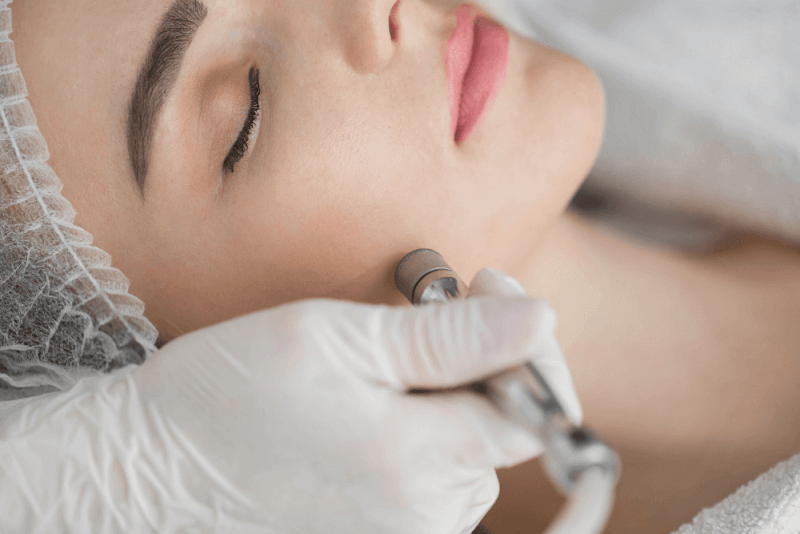What is a Dermoid Cyst?
Dermoid cysts occur when various tissues collect under the skin. These cysts may contain hair, teeth, or nerve cells. Typically appearing at birth, dermoid cysts often form in the head and neck region.
However, they can also be found in the ovaries, spine, or other parts of the body. Although dermoid cysts are generally harmless, surgical removal is often recommended.
A dermoid cyst is the growth of normal tissue in a cell pocket. It takes this name when this tissue grows inside the skin or in an unexpected place. These cysts are lump-like swellings that can contain fluid or other materials. Typically, they contain an oily and yellow substance, but they may also include the following.
- Bone
- Fluid
- Hair
- Nerves
- Skin
- Sweat glands
- Teeth
Dermoid cysts can appear anywhere on the body and close to the skin surface. They can also develop deep within the body. Initially, these cysts may appear like tumors but are generally not harmful. Since they do not disappear on their own, they need to be surgically removed.
Types of Dermoid Cysts
More than 8 out of 10 dermoid cyst cases occur in the head and neck region. Therefore, the most common type of dermoid cyst is the periorbital dermoid cyst. This type occurs near the outer edge of one of the eyebrows. Other commonly seen dermoid cysts include:
- Ovarian dermoid cyst
- Spinal dermoid cyst
Rare types of dermoid cysts include:
- Epibulbar dermoid cyst
- Intracranial dermoid cyst
- Nasal sinus dermoid cyst
- Orbital dermoid cyst
Diagnosis Methods for Dermoid Cysts
For diagnosing dermoid cysts, specialists first learn about the symptoms experienced by the patients. If the cyst is close to the skin surface, a physical examination is conducted. The following imaging tests may be requested for diagnosis.
- Computed tomography (CT) scan
- Magnetic resonance imaging (MRI)
- Ultrasound
- Transvaginal ultrasound
Causes of Dermoid Cysts
Dermoid cysts are congenital. They occur when the skin layers do not grow together as they should. Therefore, they form during the early developmental stages of babies in the womb.
To form a dermoid cyst, skin cells, tissues, and glands typically found in the skin collect in a sac. These glands continue to produce fluid, causing the cyst to grow.
Symptoms of Dermoid Cysts
Dermoid cysts usually do not show any symptoms. However, as the cysts grow over time, various symptoms may appear. The type of symptoms depends on the type of dermoid cyst.
Symptoms of Periorbital Dermoid Cysts
Symptoms of these cysts may include:
- A swollen and yellow lump near the edge of the eyebrow
- Changes in the shape of the bones in the area over time
Symptoms of Ovarian Dermoid Cysts
Symptoms of ovarian dermoid cysts may include:
- Pelvic pain during menstrual periods
Symptoms of Spinal Dermoid Cysts
A growing spinal dermoid cyst may compress the spinal cord or nerves, causing the following symptoms.
- Difficulty walking
- Inability to control urination
- Weakness in the legs and arms
Treatment Methods for Dermoid Cysts
Although dermoid cysts come in different types, surgery is the only treatment method. However, the surgical procedure varies depending on the type of cyst.
Dermoid Cyst Surgery
The method of surgery for cysts varies depending on the location of the cyst.
Periorbital Dermoid Cyst
To remove this type of cyst, the area is first cleaned, and local anesthesia is injected. Then, the cyst is removed through a small incision. The incision is closed with stitches to leave minimal scarring and promote quick healing.
Ovarian Dermoid Cyst
For this type of cyst, a minimally invasive surgical method called ovarian cystectomy is used to remove the cyst without removing the ovary. If the cyst is large, the ovary may also need to be removed.
Spinal Dermoid Cyst
To remove this cyst in the spine, surgical microscopes and precise instruments are used. The patient is placed face down during the surgery to allow easy access to the cyst. It is performed under general anesthesia.
Benefits of Dermoid Cyst Surgery
While dermoid cyst surgery is the only treatment option, it completely eliminates the symptoms experienced by patients when performed.
Complications of Dermoid Cyst Surgery
Most dermoid cyst surgeries do not cause serious complications. However, like any surgical procedure, some complications can occur, though rarely. These complications include:
- Damage to nearby bones
- Infection
- Spinal cord and nerve damage
- Rupture of the cyst








